Search

Easing Depression in Older Adults
Depression is common among older adults. But treatment with the standard type of drugs, called antidepressants, doesn’t always work. When depression remains after trying a couple of these drugs, it hasn’t been clear what approach might be best. Researchers studied over 600 adults, ages 60 and older, who had hard-to-treat depression. Participants were divided into three groups. One group added the…
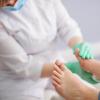
Living With Gout
Gout is a common and painful type of arthritis (swelling in one or more of your joints). It usually first appears in a big toe or lower limb. But other joints can be affected. Most types of gout are treatable, especially if caught early. Gout is more common in men. It tends to first arise for them in middle age. Women usually develop gout only after menopause. Flares of gout often start suddenly…

NIH Spanish Health Information Portal
Find Spanish-language health information from across NIH in one place. This recently redesigned site offers a wealth of free, science-based health information in Spanish. The “Ask Carla” feature invites your questions and comments on health info. Access the site from your PC or mobile device to get the health information you need.
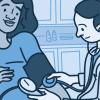
Delivering Safer Pregnancies
Pregnancy and childbirth can be a joyous time. But growing and delivering a baby are some of the most challenging things the human body can do. These processes can put so much strain on the body’s systems that they may lead to serious health problems. Most people have healthy pregnancies. Millions of births occur each year in the U.S. But, more than 50,000 people have serious health problems…, Warning Signs, The body goes through many changes during pregnancy. So women may dismiss some potentially concerning symptoms. “But you can catch a significant number of life-threatening conditions just by listening to your body and not ignoring certain things,” says Dr. Luis Pacheco, a pregnancy expert at the University of Texas. “If something doesn’t feel right, talk about it with your care provider,” says Dr…, Addressing Health Problems, There are effective treatments for many pregnancy-related health problems. Some drugs used for diabetes and mental health conditions can be used safely during pregnancy. Your doctor may prescribe aspirin to prevent a dangerous condition called preeclampsia if they find signs that you’re at high risk. Preeclampsia can turn into a deadly condition called eclampsia. NIH-funded researchers are now…, Staying Healthy After Delivery, Health risks from pregnancy don’t end after delivery. Serious health problems can begin up to a year after giving birth. But the weeks right after delivery can be especially important. “The first six weeks after pregnancy is another important time for women to pay attention to their own health. Most deaths happen in that short time after delivery,” Catov explains. “It’s a time when women are very…
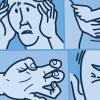
The Benefits of Botulinum Toxin
Botulinum toxin injections are well-known for their use smoothing out wrinkles. They’re available under brand names such as Botox, Xeomin, Dysport, Myobloc, and Jeuveau. While wrinkle removal is the most common use, it’s not the only one. The first use for botulinum toxin injections came out decades ago. It was for treating certain eye problems. Since then, doctors have been finding that the…

Stop Smoking Early To Improve Cancer Survival
Lung cancer is responsible for one in five cancer deaths in the U.S., and smoking is largely to blame. Since the number of smokers has fallen in recent years, lung cancer rates have also dropped. Still, survival rates remain low. About 75% of lung cancer patients die within five years of diagnosis. Previous studies found that quitting smoking can help to lengthen life. A new study found that for…

Protect Your Eyes From Sun Damage
Most of us know that too much sun can cause sunburn and skin damage. But did you know that the sun’s ultraviolet (UV) rays can also harm your eyes? UV light is invisible. It can’t be seen by the human eye. But it can still damage your vision. Sunlight has a mixture of both visible and invisible rays, or waves. The long waves, like radio waves, are harmless to people. But shorter waves like UV…

All of Us Research Program
NIH is inviting 1 million people across the U.S. to join one of the most diverse health databases in history. Researchers use this data to learn more about why people get sick or stay healthy. Learn more about your own health, too. You can receive personalized reports about your health risks and possible responses to medicines.
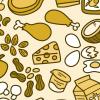
Breaking Down Food
Food provides energy and nutrients that are essential for your health. These include proteins, carbohydrates, and fats (called macronutrients), and vitamins and minerals (called micronutrients). Having a balanced diet helps ensure you get all the nutrients your body needs. The Dietary Guidelines for Americans offer guidance on what a balanced diet looks like. These recommendations are based on…, Finding Nutritious Foods, Macronutrients make up the bulk of the [qtip:calories|The amount of energy stored in food.] you eat each day. They provide the nutrients that your body needs to make energy. They also give your cells important building blocks needed for all their different functions, like fighting diseases. Your body needs only small amounts of each micronutrient. But they are critical for healthy development and…, Meeting Your Body’s Needs, Your body still might be able to function when it’s not getting enough of the different macronutrients, says Samantha Adas, a nutritionist at NIH, “but that doesn’t mean it’s optimal.” Proteins are needed for cells to perform critical functions in your body. They’re broken down by your body into amino acids. Amino acids are used by cells to build muscle, skin, and organs; break down toxins; and…, Getting Personal, Our [qtip:genetic|Having to do with genes, the stretches of DNA you inherit from your parents. Genes define characteristics, like how likely you are to get certain diseases.] makeup interacts with our diet and may affect how each person’s body breaks down food. Scientists are now digging deeper to better understand these differences. NIH has launched a precision nutrition study to learn more…
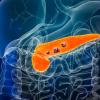
Testing an mRNA Vaccine to Treat Pancreatic Cancer
Pancreatic cancer is one of the deadliest types of cancer. Only about 12% of people with this cancer will be alive five years after treatment. Scientists have been testing ways to get the body’s disease defense system, called the immune system, to fight pancreatic cancer. One research team created personalized vaccines. To do this, they used mRNA—the same approach used to make vaccines for COVID-…
NIH Office of Communications and Public Liaison
Health and Science Publications Branch
Building 31, Room 5B52
Bethesda, MD 20892-2094
Contact Us:
nihnewsinhealth@od.nih.gov
Phone: 301-451-8224
Share Our Materials: Reprint our articles and illustrations in your own publication. Our material is not copyrighted. Please acknowledge NIH News in Health as the source and send us a copy.
For more consumer health news and information, visit health.nih.gov.
For wellness toolkits, visit www.nih.gov/wellnesstoolkits.
